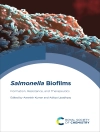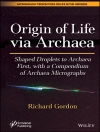Blue-green algae (also known as cyanobacteria) and the toxins they can produce pose serious economic, environmental, and public health problems worldwide. Much of the scientific and public interest in these microorganisms arises from their tendency to undergo explosive population growth and form harmful blooms, which have inflicted damage in industries as diverse as health care, public utilities, agriculture, recreation, real estate, and commercial and sport fishing. Until now, water quality professionals and other individuals tasked with finding and eliminating cyanotoxins have lacked an accessible guide to these potentially deadly microorganisms.
Written for nonspecialists in a clear and straightforward style, this guide will help students, landowners, and citizen scientists identify different kinds of cyanobacteria and understand their impact on waterways, from neighborhood lakes and farm ponds to major river systems. The central feature of the book is a detailed key that systematically walks the reader through each step of the identification process. This key is linked to an extensive set of photographs and a companion smartphone app to assist readers in confirming their findings.
Authors Mark A. Nienaber and Miriam Steinitz-Kannan include an ample glossary to help newcomers to the subject get up to speed as well as an in-depth and current bibliography to aid advanced readers in further research. They also offer instructions on how to correctly collect and analyze cyanobacteria. Altogether, this accessible yet comprehensive resource makes important, complex material available to a wide range of professionals and laypeople engaged in combating harmful cyanotoxins.
Innehållsförteckning
Introduction
1. Collecting Cyanobacteria
2. Description
3. Cyanobacterial Toxicity
4. Cyanotoxin Classification
5. Preventive Maintenance and Control of Algal Blooms
6. The Key
7. Descriptions of Genera
Glossary
Bibliography
Acknowledgments
Index
Om författaren
Mark A. Nienaber is the sole proprietor of Algae Services and has more than forty years of experience in algae and vascular plant identification.












